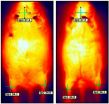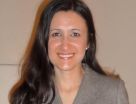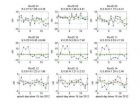(Press-News.org) Climate change is a hotly debated issue among many scientists, but a new study published by a University of Alberta researcher notes that geoscientists and engineers also become embroiled in the issue—and for some, it can get surprisingly personal.
Lianne Lefsrud, a PhD student in the Alberta School of Business, surveyed the membership of the Association of Professional Engineers and Geoscientists of Alberta regarding their beliefs on climate change and its causes, and on where responsibility for change rests. The responses reflected the rational, logical debates that would be expected of their professions. But when it came to being able to expand on their beliefs, the tone changed quite unexpectedly.
"Our findings show over 99 per cent agree that the climate is changing. They're pretty much split on the cause," she said. "But what was most interesting was the emotion, the metaphor, the very colourful language that they used in the open-ended responses."
Lefsrud says despite the disagreement on what causes climate change and the intensity of the discord, there were recurrent themes that offered the potential of finding common areas of interest that would allow for collaboration.
Keepers of fact: defining/establishing expertise at the expense of others
Lefsrud noted that many of the personal responses positioned the issue in terms of "us versus them." She said the respondents seemed to claim a certain superiority of knowledge over the general populace on the subject, while at the same time denigrating the experiences, knowledge or ethics of colleagues in their profession who had a different opinion.
"It's very much a construction of their own expertise and legitimization tactics they use and the delegitimization of others, of their 'enemies,'" she said.
Statistical points of view
The findings, published in the journal Organizational Studies, identify five distinct beliefs on climate change, ranging from evolutionary to economic. There were also some interesting distinctions in who believed what about the subject. Younger, female engineers employed in government seemed to support the Kyoto Protocol, whereas their older, male counterparts—largely employed by oil and gas companies—tended to take a fatalistic response to climate change, labelling nature as the culprit. However, one group gave cause for hope that consensus could be achieved, even among such diametrically opposed opinions.
"They were the smallest yet most active group," said Lefsrud. "They were quite senior and quite knowledgeable, so they saw how they could work the angles to make a 'discourse coalition.'"
Divided by cause, united by effect
Lefsrud noted that while the survey data could lead some to believe that the level of disagreement would prohibit any sort of decision-making or conscious action, she says there were many common points of interest that could be pulled together to establish unity and effect change. She said all the respondents seemed to agree that there was a risk and that there needed to be some sort of action to try to mitigate it.
"It was interesting to see how a coalition could be built and work together to kind of patch up these factions and say, 'OK, so what. Let's set this aside. We all agree it's a risk. We all agree to do something, so let's do something," said Lefsrud. "That was quite a hopeful message to say that we can do something here.
"Now that we can understand some of these different positions, we can do something in terms of bridging these positions."
### END
Survey reveals fault lines in views on climate change
2013-02-05
ELSE PRESS RELEASES FROM THIS DATE:
Cancer in African Americans: Gap closing for some sites; Widening for others
2013-02-05
The cancer death rate for men declined faster among African Americans than among whites in the latest time period, narrowing the racial disparity in overall cancer death rates, according to a new report from the American Cancer Society. But while gaps are closing for some cancers, such as lung and other smoking-related cancers and for prostate cancer, the racial disparity has widened for colorectal cancer and female breast cancer, cancers that are most affected by screening and treatment. The findings are published in Cancer Statistics for African Americans, 2013 which ...
Evidence that at least 1 mammal can smell in stereo
2013-02-05
Most mammals, including humans, see in stereo and hear in stereo. But whether they can also smell in stereo is the subject of a long-standing scientific controversy.
Now, a new study shows definitively that the common mole (Scalopus aquaticus) – the same critter that disrupts the lawns and gardens of homeowners throughout the eastern United States, Canada and Mexico – relies on stereo sniffing to locate its prey. The paper that describes this research, "Stereo and Serial Sniffing Guide Navigation to an Odor Source in a Mammals," was published on Feb. 5 in the ...
Using single quantum dots to probe nanowires
2013-02-05
Modern telecommunications happens because of fast electrons and fast photons. Can it get better? Can Moore's law---the doubling of computing power ever 18 months or so---be sustained? Can the compactness (nm-scale components) of electronics be combined with the speed of photonics? Well, one such hybrid approach is being explored at the Joint Quantum Institute (*), where scientists bring together three marvelous physics research fields: microfluidics, quantum dots, and plasmonics to probe and study optical nanostructures with spatial accuracy as fine as 12 nm. ...
Fighting fat with fat: Stem cell discovery identifies potential obesity treatment
2013-02-05
February 5, 2013—Ottawa—Ottawa scientists have discovered a trigger that turns muscle stem cells into brown fat, a form of good fat that could play a critical role in the fight against obesity. The findings from Dr. Michael Rudnicki's lab, based at the Ottawa Hospital Research Institute, were published today in the prestigious journal Cell Metabolism.
"This discovery significantly advances our ability to harness this good fat in the battle against bad fat and all the associated health risks that come with being overweight and obese," says Dr. Rudnicki, a senior scientist ...
Mammogram every 2 years has same benefit as yearly mammogram for older women, UCSF study finds
2013-02-05
Among older women, getting a mammogram every two years was just as beneficial as getting a mammogram annually, and led to significantly fewer false positive results, according to a study led by UC San Francisco.
The national study of more than 140,000 women between the ages of 66 and 89 appears online February 5, 2013, in the Journal of the National Cancer Institute.
"Screening every other year, as opposed to every year, does not increase the probability of late-stage breast cancer in older women," said lead author Dejana Braithwaite, PhD, a UCSF assistant professor ...
Cargo container research to improve buildings' ability to withstand tsunamis
2013-02-05
Anyone who has seen the movie "Impossible" or watched footage from the Japanese tsunami has learned the terror that can strike with little warning. In those cases, when there is no time to flee, there may still be time to reach higher ground, called vertical evacuation.
But as you race to the third floor, how do you know if the building will hold up? Walls of water are not the only danger. Another potentially lethal challenge is water-driven debris - such as 60,000-pound fully loaded cargo containers - transformed into projectiles. Often pulled behind semi-trucks on highways, ...
Olive oil component alleviates intestinal ischemia and reperfusion
2013-02-05
Here's another reason why you should include olive oil in your diet: A new research report published in the Journal of Leukocyte Biology suggests that at least one compound in olive oil significantly reduces intestinal ischemia (restricted blood supply) and the resulting reperfusion injury (tissue damage caused when blood supply returns). The compound, called "oleuropein aglycone," is the most prominent polyphenol found in olive oil and could become a novel therapeutic target aimed at treating intestinal ischemia and reperfusion injury in humans. Ultimately, this research ...
Flexible classroom design saves money, improves flexibility, accessibility of instruction
2013-02-05
Researchers at North Carolina State University have developed a classroom design that gives instructors increased flexibility in how to teach their courses and improves accessibility for students, while slashing administrative costs.
Specifically, the new classrooms take advantage of the fact that students are bringing their own technology – such as laptops – to class. The classrooms also include mobile infrastructure, where whiteboards, desks and tables can be reconfigured according to the needs of students and instructors.
"These classrooms work really well in terms ...
Chest pain prior to a heart attack can protect the heart
2013-02-05
MINNEAPOLIS, MN – Feb. 5, 2013 – Patients who experience chest pain in the 24 hours preceding a heart attack, also called preinfarction angina, have smaller heart attacks and improved cardiac function in the contemporary cardiac stenting era, researchers found in a study published Jan. 22 in Circulation: Cardiovascular Interventions.
"Even before we began treating heart attack patients with angioplasty and stenting, physicians recognized that patients with chest pain prior to their heart attack seem to have better outcomes," says the study's senior author, Jay H. Traverse, ...
Precise Point Positioning and real-time positioning accuracy for COMPASS satellite navigation
2013-02-05
COMPASS uses the Geostationary Earth Orbit (GEO) and Inclined Geosynchronous Satellite Orbit (IGSO) satellites, which are more suitable for regional services. Its constellation is composed of 14 satellites, including 5 GEO, 5 IGSO satellites and 4 Medium Earth Orbit (MEO) satellites. As of 2012, 13 satellites have been launched. Except for G2 (unusable) and M1 (testing only), the remaining 11 satellites, including 4GEO+5IGSO+2MEO, have successfully transmitted signals and broadcasted navigational messages, to prepare for full operation starting in 2013.
Positioning accuracy ...




